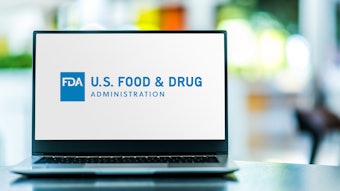The US Food and Drug Administration (FDA) has released Strategic Plan for Regulatory Science, its initiative to modernize the tools and methods that the agency uses to evaluate whether the products it regulates are safe for consumers.
According to the FDA, this regulatory science plan will be applied to both its pre-market review of efficacy and safety and its post-market product surveillance to review product quality. FDA has developed a strategic plan for regulatory science, the science of developing new tools, standards and approaches to assess the safety, efficacy, quality, and performance of FDA-regulated products.
The plan identifies eight priority areas of regulatory science where new or enhanced engagement is essential to the continued success of FDA’s public health and regulatory mission. The priority areas are:
1. Modernize toxicology to enhance product safety;
2. Stimulate innovation in clinical evaluations and personalized medicine to improve product development and patient outcomes;
3. Support new approaches to improve product manufacturing and quality ;
4. Ensure FDA readiness to evaluate innovative emerging technologies;
5. Harness diverse data through information sciences to improve health outcomes;
6. Implement a new prevention-focused food safety system to protect public health
7. Facilitate development of medical countermeasures to protect against threats to United States and global health and security; and
8. Strengthen social and behavioral science to help consumers and professionals make informed decisions about regulated products.
The above initiatives are further explained in Advancing Regulatory Science at FDA, a document outlining the plan.
FDA will apply available resources to implement the Strategic Plan for Regulatory Science through management of scientific programs within FDA and engagement of collaborators and partners in industry, academia and government. The plan is designed to allow the FDA both to meet today’s public and animal health needs and to be fully prepared for the challenges and opportunities of tomorrow to help harness revolutions in science that can be translated into products that help make and keep our nation both safe and healthy.







!['I think the biggest game-changer about [MoCRA's] ... requirement for GMPs is how it changes what it means to be adulterated,' Brandi Reinbold, senior manager of global certification for NSF International, said in this sponsored videocast. Register now to watch and learn more. It's free.](https://img.cosmeticsandtoiletries.com/files/base/allured/all/image/2023/11/NSF_Intl_Thumbnail.6554efdc29816.png?auto=format%2Ccompress&fit=crop&h=191&q=70&rect=275%2C70%2C1328%2C748&w=340)


